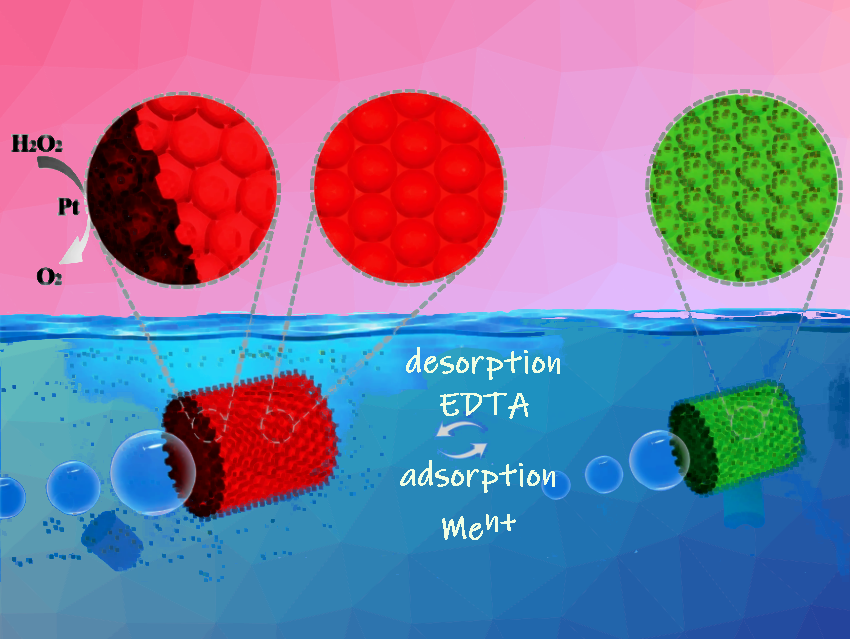Contamination of water by heavy metal ions (HMIs) is a serious threat to humans and the environment. Efforts are being made to develop functional materials that enable efficient and intelligent adsorption of heavy metals.
Dagan Zhang and Lingyun Sun, Nanjing University Medical School, China, and colleagues have developed self-powered cylindrical micromotors (SCCMs) with reversible heavy metal ion adsorption capacity and self-reporting properties. The SCCMs are composed of platinum nanoparticles (Pt NPs) and a responsive hydrogel of carboxymethyl chitosan (CMC; 2 % (w/v)) and polyacrylamide (PAM; 5 %).
The Pt-NPs are loaded asymmetrically onto the SCCMs. They serve as catalysts for the decomposition of H2O2 to produce oxygen. The recoil of the liquid, when the generated gas bubbles burst, creates the motion of the SCCMs. The speed of the self-propelled SCCMs increased with H2O2 concentration, reaching a maximum at an H2O2 concentration of 15 vol%. The autonomous motion allows the SCCMs to make more contact with the heavy metal ions, resulting in significantly higher water purification efficiency.
Due to the binding of heavy metals to the functional groups of the side chain of the SCCMs, they shrink and show a color change. Ethylene-diamine-tetra-acetic acid disodium (EDTA) was used as desorbent agent to remove the heavy metal ions. The micromotors shrink and recover periodically during adsorption and desorption. This results in a dynamically regulated structural color change, which serves as a rapid self-reporting visible to the naked eye.
The team found excellent reversibility and reproducibility. This makes the SCCMs a novel, durable, and environmentally friendly adsorbent for heavy metal contamination treatment, they say. It is also a promising smart broad-spectrum adsorbent for multiplex environmental remediation and sensing assays.
- Self-Propelled Structural Color Cylindrical Micromotors for Heavy Metal Ions Adsorption and Screening,
Yixuan Shang, Lijun Cai, Rui Liu, Dagan Zhang, Yuanjin Zhao, Lingyun Sun,
Small 2022.
https://doi.org/10.1002/smll.202204479




